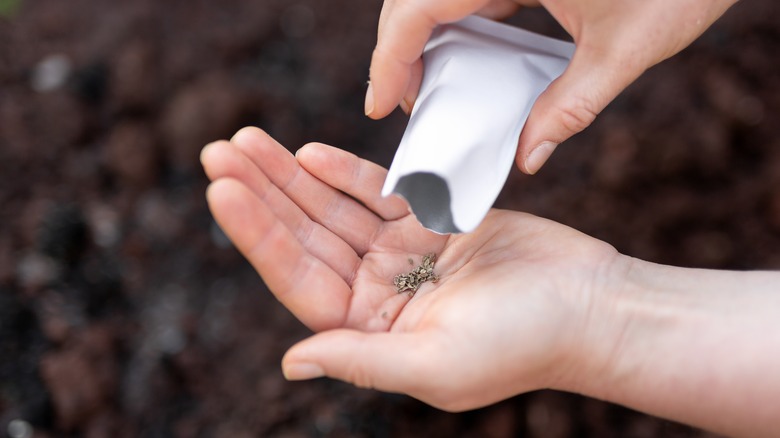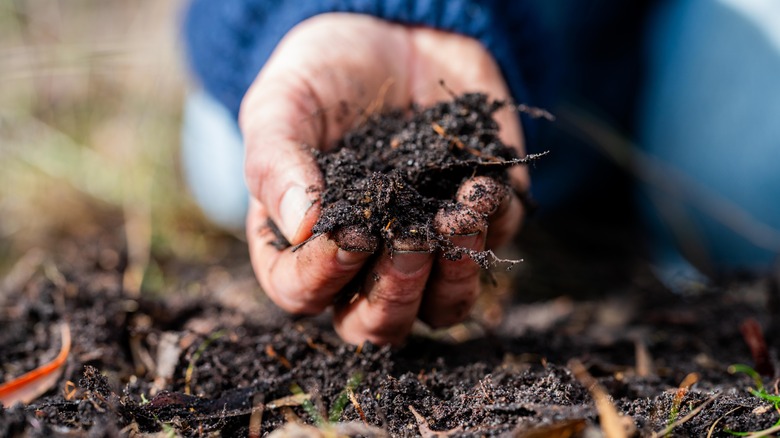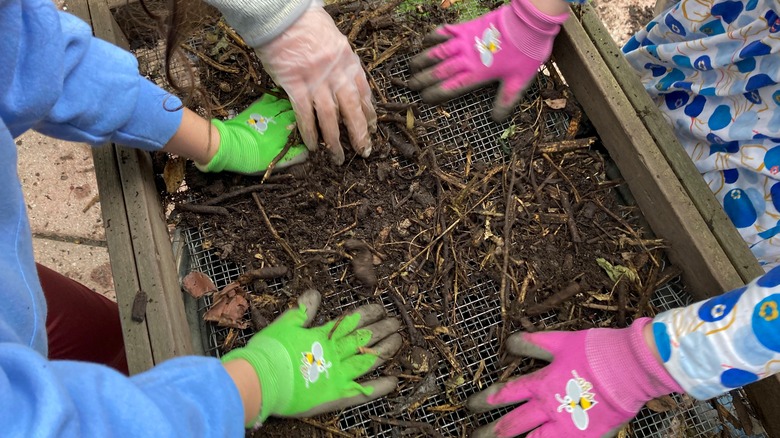Why You Should Ignore Directions On Carrot Seed Packets & Use These Tips Instead
When you buy a packet of carrot seeds, there are typically directions on the back for how to successfully plant them. But we at House Digest spoke exclusively with Eva Monheim, author of Shrubs & Hedges and received some expert advice about when you should ignore these directions and why. While Monheim explains that novice carrot gardeners should follow the directions on the packet, after you've got your footing, you can start experimenting with what works best for you as you may want to tweak your techniques for planting your carrot seeds depending on your particular setup and growing environment. You may also want to employ her expert tips, including using mushroom compost to help germinate the seeds and sifting your lumpy garden dirt or compost if you are container gardening.
The reason you may want to start off following the directions on the seed packet, Monheim explains, is because they have been collected "from knowledgeable farmers and gardeners that have practiced growing for a long time." This is the same reason why you typically follow directions for a new recipe to a T. Once you understand the basics of how to put a particular dish together, though, you can eyeball measurements and adjust cooking times to your liking. Similarly, once you feel like you understand the basics of growing carrots, you can modify your methods and try putting these expert tips to work.
Keep carrot seeds near the surface with mushroom compost
In an exclusive chat with House Digest, Eva Monheim stated that a simple carrot growing hack involves using mushroom compost combined with garden soil as it "helps to make the particle size smaller so that the seed does not fall through the larger air pores in the soil." Carrot seeds are teeny tiny, so the density of the mushroom compost will help keep them toward the surface of the soil so that they can find the light and water they need to begin growing.
You can evenly scatter the seeds over the surface of your soil and mushroom compost concoction, applying vermiculite or fine sand on top. You can also do what Monheim typically does: "I usually use a pencil or other small instrument to make a thin row or rill about [¼-inch to ½-inch] in depth and sprinkle the seeds in very slowly, making sure there are no large masses of seed in one place." After that, cover the rows with your mushroom compost and soil mixture, taking care to do so lightly.
Sift your carrot seeds with your soil or compost when container gardening
Both soil and compost often contain large clumps as well as various debris that needs to be removed before use. Sifting your compost or soil is a common practice as this can create a finer, fluffier soil without any loose sticks, leaves, or scraps that may inhibit the growth of your young plants. In an exclusive interview with House Digest, Eva Monheim discussed sifting your carrot seeds along with your soil and compost: "You can sift seed in compost or soil but it is not as easy to make a clean row so you can use this technique when growing carrots in containers."
For those without the space for a garden full of carrots, container gardening is an effective alternative that can yield excellent results. Monheim explained that when using a container to grow carrots, "you can sift compost or soil with the seeds and then disperse over the container's surface." However you choose to plant your carrot seeds, be sure to do so "before the last frost date as carrots are a cool season crop," Monheim states, adding, "You can also plant them in late summer for harvesting through the fall and into early winter before heavy frosts come."


